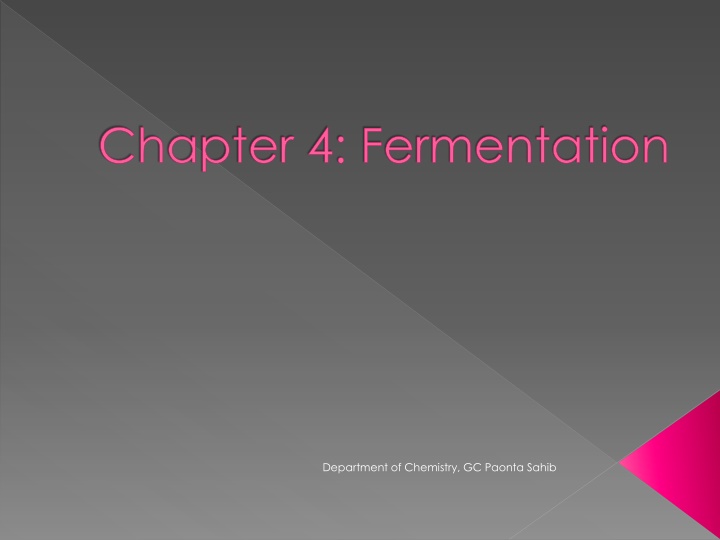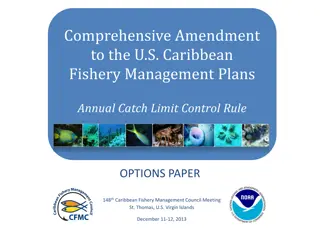
Fermentation: Processes and Applications
Explore the world of fermentation in the Department of Chemistry at GC Paonta Sahib. Learn about aerobic and anaerobic fermentation, conditions required for successful fermentation, and the production of vital compounds like Ethyl Alcohol, Citric Acid, Penicillin, and Vitamins. Discover the significance and applications of fermentation in producing various commercially important substances.
Uploaded on | 0 Views
Download Presentation

Please find below an Image/Link to download the presentation.
The content on the website is provided AS IS for your information and personal use only. It may not be sold, licensed, or shared on other websites without obtaining consent from the author. If you encounter any issues during the download, it is possible that the publisher has removed the file from their server.
You are allowed to download the files provided on this website for personal or commercial use, subject to the condition that they are used lawfully. All files are the property of their respective owners.
The content on the website is provided AS IS for your information and personal use only. It may not be sold, licensed, or shared on other websites without obtaining consent from the author.
E N D
Presentation Transcript
Chapter 4: Fermentation Department of Chemistry, GC Paonta Sahib
Fermentation It is a chemical process by which complex organic molecules such as glucose are broken down into simpler substances by the enzymatic action of bacteria, yeasts or other microorganisms. It can be carried out in 2 ways: - Aerobic fermentation - Anaerobic fermentation Department of Chemistry, GC Paonta Sahib
Conditions favourable for fermentation Temperature Aeration pH conditions Concentration Presence of other substances Absence of preservatives Department of Chemistry, GC Paonta Sahib
Production of some commercially important compounds Ethyl Alcohol (from molasses) Department of Chemistry, GC Paonta Sahib
Process Department of Chemistry, GC Paonta Sahib
Citric Acid (from aspergillus niger) Department of Chemistry, GC Paonta Sahib
Antibiotics Penicillin Department of Chemistry, GC Paonta Sahib
Vitamins Vitamin B2 (Riboflavin) Department of Chemistry, GC Paonta Sahib
Vitamin C Department of Chemistry, GC Paonta Sahib
Thank You Department of Chemistry, GC Paonta Sahib

